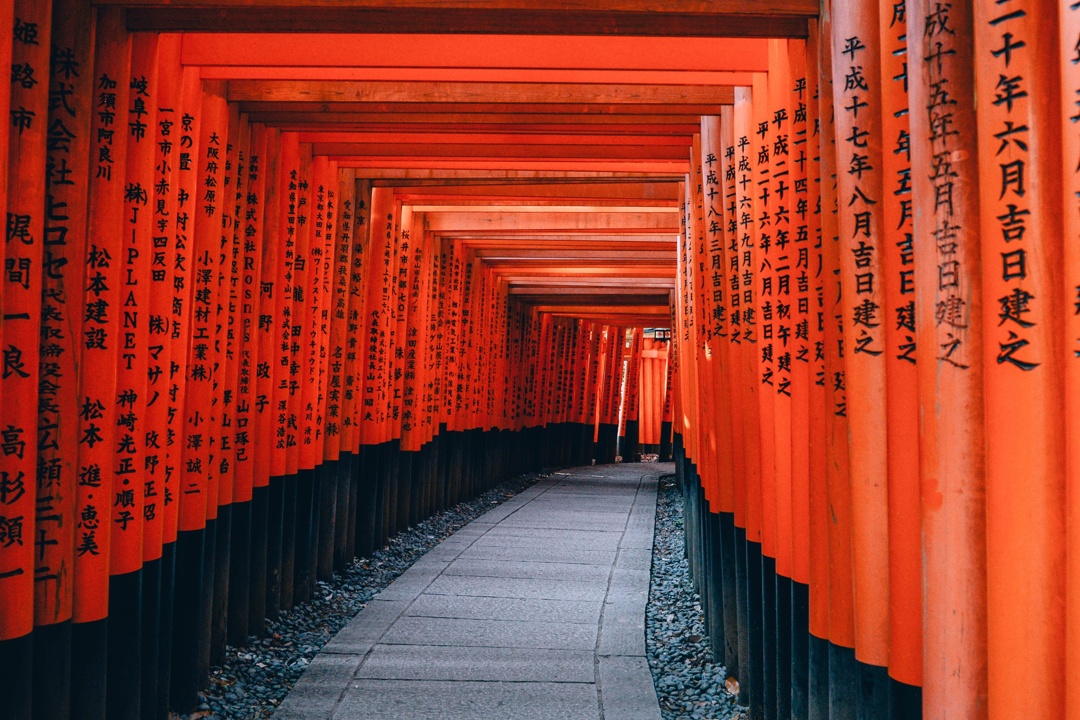Experience Japan
10 nights / 11 days
Fully Guided
All Available Dates - Call 01 2366852 To Book Now
21 Jul 2025
08 Sep 2025
06 Oct 2025
13 Oct 2025
20 Oct 2025
27 Oct 2025
03 Nov 2025
10 Nov 2025
09 Mar 2026
16 Mar 2026
23 Mar 2026
30 Mar 2026
06 Apr 2026
13 Apr 2026
20 Apr 2026
11 May 2026
01 Jun 2026
14 Sep 2026
21 Sep 2026
05 Oct 2026
12 Oct 2026
19 Oct 2026
26 Oct 2026
02 Nov 2026
09 Nov 2026
08 Mar 2027
15 Mar 2027
22 Mar 2027
29 Mar 2027
05 Apr 2027
12 Apr 2027
19 Apr 2027
03 May 2027
10 May 2027
17 May 2027
24 May 2027
31 May 2027
07 Jun 2027
14 Jun 2027
19 Jul 2027
16 Aug 2027
06 Sep 2027
13 Sep 2027
20 Sep 2027
04 Oct 2027
11 Oct 2027
18 Oct 2027
25 Oct 2027
01 Nov 2027
08 Nov 2027
This tour not only visits the famous sights of Japan including Osaka, Nara, Kyoto, Mt Fuji and Tokyo, but is brimful of experiences allowing you to immerse yourself in the local culture, from traditional tea ceremonies to origami.
B Breakfast Included
L Lunch Included
D Dinner Included
Day 1 - Fly overnight to Osaka
Fly overnight to the lively, fast-paced city of Osaka! Depending on your time of arrival, the rest of the day is at leisure to start soaking up the local culture.
Day 2 - Fly overnight to Osaka
Fly overnight to the lively, fast-paced city of Osaka! Depending on your time of arrival, the rest of the day is at leisure to start soaking up the local culture.
Day 3 - Discover Nara
Visit the impressive Osaka Castle. After lunch, continue to Nara and enjoy a leisurely walk through Nara Park to Todaiji Temple and admire the traditional Isuien Gardens before returning to Osaka.
Day 4 - Arashiyama Bamboo Forest
Journey by road to Kyoto. Capital for 1,000 years, this enchanting city is the epitome of traditional Japan. Start with a visit to Togetsukyo Bridge located in the heart of the vibrant district of Arashiyama and stroll through the bamboo forest with its towering and impressive thickets. Also visit Ryoanji Temple, home to Japan's most famous zen garden and the famous 'Golden Pavilion' Kinkakuji Temple. Enjoy some free time this afternoon to further explore the city.
Day 5 - Experience Kyoto
Begin the day with a visit to one of Kyoto's most famous sites – Fushimi Inari Shrine, renowned for its 10,000 vermilion torii gates and follow a forested hillside pathway passing numerous shrines along the way. Later, enjoy the age-old rituals of a tea ceremony, and try your hand at origami. After lunch, your immersive experience continues with a fan painting class where you will learn the technique of this highly refined and sought-after visual art.
Day 6 - Search for Snow Monkeys
Spend the morning travelling by bullet train to Nagoya and then journey on the limited express train to Nagano. Upon arrival, head to Jigokudani Yaen-Koen and walk through a picturesque, forested valley to the hot pools where you can search for the famous Japanese macaques (snow monkeys) - sighting not guaranteed. Also visit the 7th-century Zenkoji Temple, one of Japan's most popular Buddhist temples, before continuing by road to Matsumoto.
Day 7 - Miso and Sake Tasting
Begin the day with a visit to the magnificent 16th-century Matsumoto Castle, also known as 'Crow Castle', due to its intense black exterior. Next, head to a miso house and learn about the process of making this famous Japanese seasoning. After lunch, visit a sake brewery and enjoy a tipple or two! There will be some free time this afternoon to further explore Matsumoto.
Day 8 - Mount Fuji
Travel by road to the Fuji Five Lakes area. Ascend by road to the 5th Station to view Mt Fuji (weather permitting). Also, enjoy a peaceful cruise on Lake Ashi before taking to the skies on the Komagatake Ropeway to enjoy the breathtaking scenery below. Continue to Mishima and stay overnight.
Day 9 - Kamakura Grand Buddha
Journey to Kamakura, a popular coastal city located south of Tokyo. Visit Kotokuin Temple, which houses Japan's second tallest bronze buddha statue, followed by a stroll through Komachi Street which is lined with pretty little shops before visiting Tsurugaoka Hachimangu, Kamakura's most important shrine. Later, continue to Tokyo.
Day 10 - Discover Tokyo
Begin the day by ascending to the observation deck at the Tokyo Skytree, Japan's tallest tower, for panoramic views over the city below. Next, head to the old district of Asakusa and soak up the atmosphere at Sensoji, Tokyo's oldest and most famous temple, before browsing the stalls on Nakamise shopping street. After lunch, explore the Tokyo National Museum to learn about Tokyo's historic heritage. End the day with a cruise on the waters of Tokyo Bay and enjoy dinner from the perfect vantage point to admire the supercharged lights of the city.
Day 11 - Fly Tokyo to UK
Fly to the UK, arriving home the same or following day.









